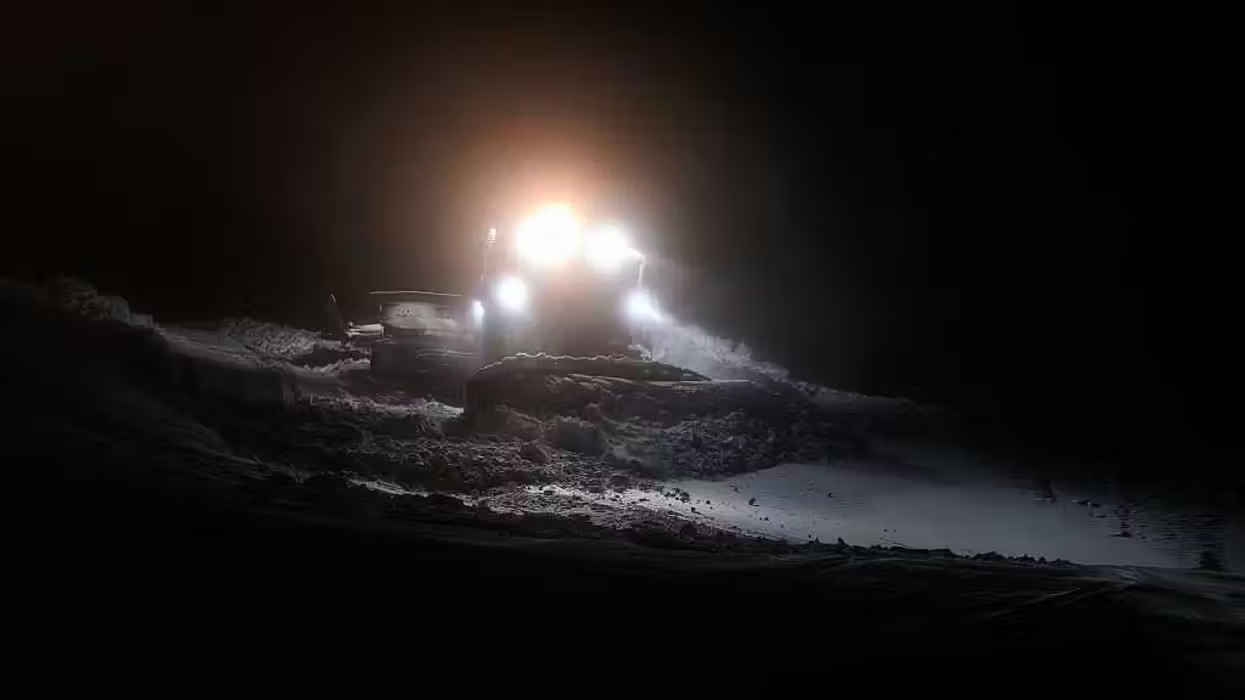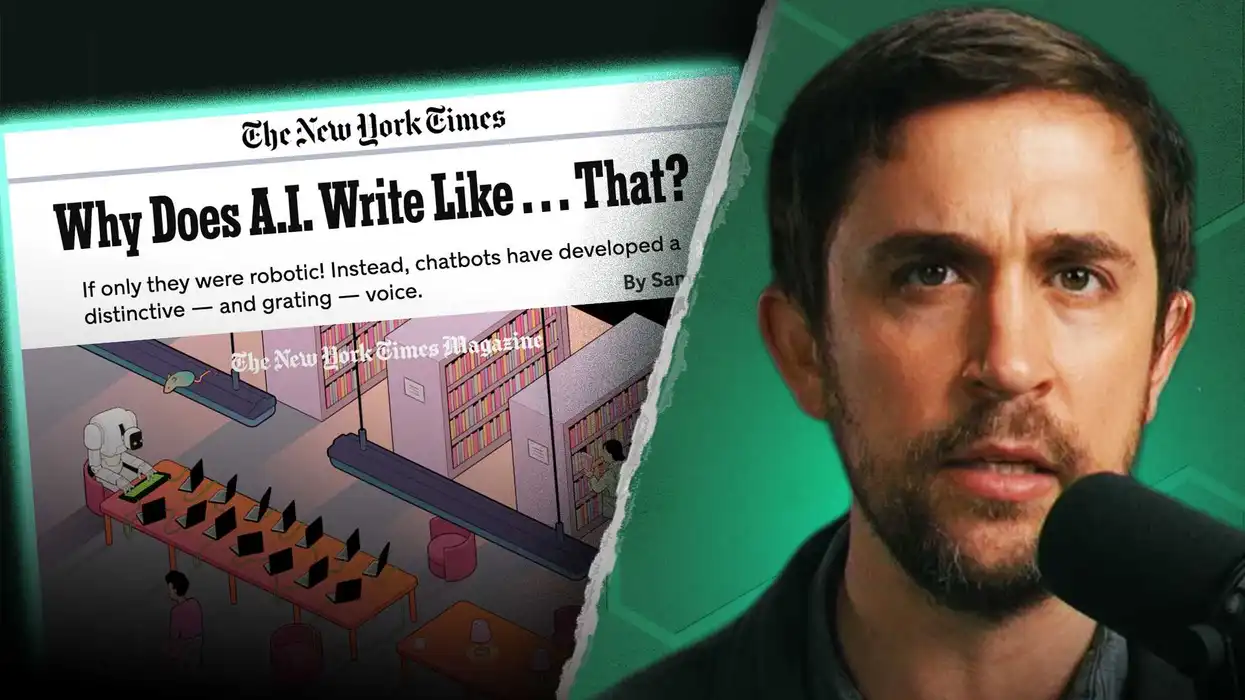© 2025 Blaze Media LLC. All rights reserved.
5:46 a.m.
Reuters: Communications Director at World Nuclear Association, says he believes the blast at the power plant was due to hydrogen igniting.
5:25 a.m.
Japan's disaster toll is rising. Kyodo predicts death estimates will soon surpass 1,600.
Toyota and other Japanese automakers are expected to suspend all domestic operations on Monday.
In lighter news, China has confirmed its two giant pandas at the Tokyo Zoo are alive and well.
5:11 a.m.
Kyodo: Following explosion at nuclear plant, evacuation area surrounding Fukushima plants has been expanded to 20km radius. Earlier declaration of emergency at all five plants of concern remains in effect.
4:14 a.m. - Explosion at Nuke Plant
1:41 a.m. - Nuclear Update
Kyodo: "Pressure successfully released from Fukushima No. 1 reactor"
1:33 a.m. - Nuclear Update
Kyodo: "Japanese Prime Minister Kan does not rule out possible radiation leak from Fukushima No 2."
1:15 a.m. - Nuclear Update
Tokyo Electric Power is working to pump cooling water into the reactor. However, parts of the reactor's nuclear fuel rods were briefly exposed to the air after cooling water levels dropped through evaporation, according to one news account. According to a TEPCO operator, workers on the scene are using water pumped from a fire engine to restore cooling water levels.
A TEPCO spokesman told AFP that "we believe the reactor is not melting down or cracking. We are trying to raise the water level."
12:58 a.m. - Nuclear Update
The Twitter universe is watching the nuclear situation in Japan very closely. "Chernobyl" and "Fukushima" are now trending topics. However, people should remember that nuclear technology has come a long way since Chernobyl.
Naoto Sekumura, a professor at the University of Tokyo says such a major radioactive disaster is unlikely.
“No Chernobyl is possible at a light water reactor," he told Al Jazeera. "Loss of coolant means a temperature rise, but it also will stop the reaction. Even in the worst-case scenario, that would mean some radioactive leakage and equipment damage, but not an explosion. If venting is done carefully, there will be little leakage. Certainly not beyond the 3 km radius.”
12:34 a.m. - Meltdown Warning
Ominous warnings posted by Kyodo:
BREAKING NEWS: Fukushima nuke plant might be experiencing nuclear meltdownBREAKING NEWS: Radioactive Cesium detected near Fukushima plant: nuke safety commission
Cesium found outside the plant suggests a reactor may have started melting, as cesium is a byproduct of a nuclear chain reaction.
Japanese officials are urging the public not to panic, saying that a possible meltdown would not affect any humans outside of a six-mile radius of the plant. Not sure if that is going to relieve fears.
12:26 a.m. (Saturday)
While we're watching developments concerning uncontrolled nuclear reactors in Japan, this guide of how nuclear power plants work might come in handy for reference.
11:42 p.m. - Magnitude Upgraded?
The Pacific Tsunami Warning Center has upgraded Japan's initial 8.9 magnitude quake to 9.1 -- declaring the earthquake's power was two times more powerful than initially thought. This upgrade makes Japan's quake the fourth-most powerful in history. The USGS, however, has kept its estimates at 8.9. It is not uncommon for scientists to estimate different magnitudes immediately after an earthquake, the Honolulu Star Advertiser reports.
11:32 p.m. - Updated Casualties
Kyodo now estimates more than 1,200 are dead or missing. In Miyagi prefecture, thousands remain trapped under rubble surrounded by lingering flood waters.
11:23 p.m.
Four million Japanese households remain without power as we approach 24 hours since Friday's 8.9 magnitude quake. According to Japan's national police agency, more than 215,000 people are taking refuge in emergency shelters in the east and north of the country. CNN reports at least 700 people are missing.
BoingBoing has an on-the-ground account of a New Yorker living and working in Tokyo who suggests earlier earthquakes served as a warning:
It began as a light tremor, something that one becomes oddly accustomed to when living in Japan. But then the deceptively gentle tremor kept going... and going... and going. Until the bemused giggles of my Japanese office mates gradually turned into full on screams of fear as everyone tried to duck under the nearest desk. But what really brought the thought that this might be my last Friday was the fact that the quake didn't obey the rules of good luck and suddenly stop once we all ducked under the desks. No. The quake lasted a very, very long time. Not unlike an animal's howl, the quake went from a deep rumble and gradually built up to a thunderous and sustained wave of rhythmic, humming, physical chaos. It lasted about five minutes by my guess. And if you've ever experienced an earthquake, you know that five minutes is an eternity compared to the run-of-the-mill quake. It was scary.What I find most odd is that I'm not hearing the major cable news channels mention the fact that we experienced a similar (albeit far weaker), very long precursor earthquake earlier in the week. Clearly, that was the warning shot leading to the hit we sustained today.
11:20 p.m.
The first tsunami waves have reached Chile's South American coastline. There have been no reports of significant damage.
11:04 p.m.
Video out of Japan captures helicopter rescue from rooftop. You can see the utter devastation in the surrounding area.
10:44 p.m.
The 8.9 magnitude earthquake reportedly sparked more than 200 fires across Japan.
9:50 p.m. - Cause of Quake?
Kyodo: "20-meter displacement in 500-km fault seen as cause of Japan quake"
9:24 p.m. - Another Japan Quake
A 6.8 magnitude earthquake just struck off the shore of Honshu, Japan. Since the 8.9 quake hit the island nation, residents have continually had to brace as more than 124 subsequent quakes of at least 5.0 have continued to rattle the land.
9:14 p.m. - South Pacific Earthquake
According to the United States Geological Survey, a 6.1 magnitude earthquake has struck the small island nation of Tonga.

9:10 p.m. - Blame Global Warming
The blame game is already under way. Apparently global warming not only caused the earthquake, but also the resulting tsunami. Go figure.
8:39 p.m. - Nuclear Update
Radiation levels eight times the norm have been detected outside of at least one of Japan's nuclear power plants currently declared emergencies.
8:10 - No nuclear?
Environmental activist group Greenpeace is using the Japan earthquake disaster to support it's anti-nuclear energy agenda.
"Japan is in the middle of a nuclear crisis with potentially devastating consequences," a spokesman for the group says. "While the immediate focus is on minimizing radiation release and keeping local people safe, this is yet another reminder of the inherent risks of nuclear power."
"We do not believe the safety standards for U.S. nuclear reactors are enough to protect the public today," Edwin Lyman, senior scientist, global security programs, at the Union of Concerned Scientists, told Reuters. The group supports nuclear power as a means to combat global warming, but wants tougher safety measures.
7:38 p.m. - Some good news
Naval and coastguard helicopters have been able to airlift and rescue all 81 passengers who were aboard a ship swept out to see by the tsunami, Japanese media are reporting. The ship had been feared lost in the immediate aftermath.
7:26 p.m. - Help is on the way
An American aircraft carrier -- the USS Ronald Reagan -- is now en route to Japan to offer assistance with air lifts, clean water and other emergency services. According to the U.S. Navy, a total of six ships are set to be involved in the quake relief mission at this point.
7:21 p.m. - Nuclear Update
Japan has declared a state of emergency at the Fukushima-Daini power plant, where three of its reactors have failed, the Associated Press reports. A state of emergency is already in place at the nearby Fukushima-Daiichi plant, where two reactors have failed.
The most recent aftershocks shaking Japan have all measured over 5.0 on the Richter Scale.
7:02 p.m.
Humanitarian update: Kyodo confirms at least 50 nations around the world have stepped forward to offer post-disaster assistance.
Nuclear update: Japanese Prime Minister Kan is headed to quake-hit areas to inspect damaged nuclear plants. In an unprecedented move, the country's safety agency issues order Tokyo Electric Power Co. to open a valve at the troubled Fukushima No. 1 nuclear power plant to release pressure. Thousands have been evacuated from the surrounding area.
6:45 p.m.
How will the earthquakes and tsunami effect Japan's economy? McClatchy sees a Keynesian silver lining:
"The Japanese are basically going to have to do a big Keynesian public works program. They needed some kind of stimulus for their economy, and now they've got it," said Marcus Noland, an Asia expert for The Peterson Institute for International Economics. ...Japan spent billions of dollars during the past decade on bridges and roads, but much of it didn't contribute to the nation's ability to produce more goods. Prior to the quake, the International Monetary Fund expected Japan's economy to grow by a sluggish 1.5 percent this year. Now they can build anew, perhaps with more productive results.
"I don't want to minimize the human toll of this, but I think the economic impact may not be as bad as some people are talking about. On the margins, they have wasted so much money, it's going to force the Japanese political system to deal with this issue," Noland said.
"Japan faces a problem of increasing concentration of economic activity in the Tokyo area . . . this may be an opportunity to shift some of that development north," Noland said.
Many U.S. companies — from engineering and architectural firms to the timber and cement sectors — could see a boost in sales to Japan as rebuilding gets under way.
6:02 p.m.
More nuclear threats: The Tokyo Electric Power Company is now confirming cooling systems of at least three reactors at a second nuclear power plant, Fukushima-Daini, are malfunctioning. Kyodo reports the plant is located 7 miles south of the Fukushima-Daiichi plant where cooling systems at one of its reactors is malfunctioning as pressures continue to rise.
The ability to control pressure in some of the reactors at Fukushima-Daini has been lost, a power company spokesman says. Pressure is stable inside the reactors, but rising in the containment vessels.
5:56 p.m.
Animation from Reuters shows the path of the massive earthquake-generated tsunami, which washed away areas of Japan at a speed of over 500 mph:
5:50 p.m.
According to LiveScience, an astonishing 20 earthquakes magnitude 6.0 or greater have struck mainland Japan since the initial 8.9 -- these in addition to dozens of smaller aftershocks.
The number of aftershocks in Japan is not uncommon for an earthquake of this size, said geologist Eric Geist, of the USGS, at a news conference.The hits are expected to keep coming, said Tom Broker, also a USGS geologist.
"It's important to note that these aftershocks are going to persist for some time," Broker said in today's news conference. "We're going to be seeing large aftershocks for at least a year."
In February, a 6.6-magnitude aftershock ruptured near Maule, Chile — almost a year after what is now the sixth-largest earthquake in recorded history, a magnitude 8.8, hit in the same region.
5:06
If officials are unable to control the pressure and temperature at the Fukushima reactor, they warn a meltdown may be possible.
The reactor's cooling system was damaged during the 8.9 magnitude earthquake. The heat produced by the nuclear reaction inside the core needs to be dissipated even though the plant was shutdown. Unless workers can repair the cooling system damage, radiation could eventually leak out into the environment. Worst case scenario: complete reactor meltdown.
5:00
The Kyodo news agency is now citing a safety panel claiming that radiation levels inside one of the reactors at the Fukushima-Daiichi nuclear plant are 1,000 times higher than normal.
Hundreds of aftershocks continue to shake the country; the latest registered 6.3 magnitude according to the US Geological Survey.
4:40
Radiation levels at the damaged Fukushima-Daiichi nuclear plant are reportedly eight times their normal levels. The Jiji Press news agency has reported one ministry official is warning of the "possibility of a radioactive leak."
Reuters also notes that pressure levels at the Fukushima plant have possibly reached more than twice the reactor's designed capacity.
Earlier Friday, U.S. Secretary of State Hillary Clinton announced that Air Force "assets" had been used to deliver coolant materials to a nuclear plant in Japan. However, officials in Washington are now confirming that report was false.
4:36
Japan: Residents living within 10 kilometers of the Fukushima-Daiichi nuclear plant have been ordered to evacuate their homes immediately. Engineers are trying to fix one of the plant's the reactor cooling systems, which was damaged during the earthquake. The Tokyo Electric Power Company warns that radiation may have already been released from the plant.
4:33
Countries in South and Central America are bracing for tsunami-generated waves. The waves have already washed ashore in Mexico's northwestern Pacific coastal region, but there were no reports of damages. In the meantime, many of the countries ports have been closed as a precaution.
Peruvian officials have said they are waiting until later on Friday to decide whether to evacuate low-lying coastal areas. Meanwhile, Ecuador has declared a state of emergency and urged residents to move inland. The Galapagos Islands and numerous endangered species living on the island are also in the path of the tsunami.
4:22
President Obama has said the Federal Emergency Management Agency (FEMA) is ready to come to the aid of any US states or territories which need help.
3:44
US Coast Guard helicopters are searching for a man who was swept out to sea by powerful waves generated by the tsunami in Northern California, the AP reports. Officials say the man was taking photos of the tsunami with two friends near the mouth of the Klamath river in Del Norte County. The two friends managed to get back to shore.
Officials have confirmed extensive damage in Brookings, a coastal city in southern Oregon. Fox News reports several vessels sank and others were swept out to sea when tsunami-generated waves swept ashore earlier this afternoon.
3:20
Earthquakes -- not aftershocks -- continued to shake Japan Friday. Earlier this afternoon, the AP reported a magnitude 6.7 quake struck central Japan, once again causing skyscrapers in Tokyo to sway. It's not clear yet if this latest quake is connected to Thursday 8.9 magnitude quake and aftershocks.
2:50
State Department spokesman PJ Crowley raised eyebrows Friday after comparing the tragedy befalling Japan to the ongoing turmoil in the Middle East. Crowley tweeted: "We've been watching hopeful #tsunami sweep across #MiddleEast. Now seeing a tsunami of a different kind sweep across Japan."
The message has since been deleted. According to Foreign Policy blog The Cable, multiple administration sources confirmed that Pentagon leadership was very upset over the tweet.
12:21
Evacuations are reportedly underway near a failed nuclear plant in Japan. A report from Reuters suggests pressure inside a reactor is building and workers have been told to immediately leave the facility. BBC has more details:
The Tokyo Electric Power Company has said the pressure inside the No. 1 reactor at its Fukushima-Daiichi nuclear plant has been rising, with the risk of a radiation leak, according to the Jiji Press news agency. Tepco planned to take measures to release the pressure, the report added. The reactor's cooling system began to malfunction after the earthquake. People living close to the plant were later evacuated as a precaution.Nuclear physicist Dr Walt Patterson tells the BBC it sounds like there is a "serious problem" at the Fukushima-Daiichi plant. "It's the sort of thing that nuclear engineers have nightmares about," he says. "If it is not resolved in the next few hours it will get serious. If the core is uncovered, then those rods at the top may get hot enough to melt themselves."
12:17
A second train has been reported missing following the quake and tsunami in Japan, the AFP news agency reports.
12:00
Secretary of State Hillary Clinton announced that the U.S. Air Force delivered emergency coolant to a Japanese nuclear plant affected by a massive earthquake.
"We just had our Air Force assets in Japan transport some really important coolant to one of the nuclear plants," Clinton said at a meeting of the President's Export Council.
"You know Japan is very reliant on nuclear power and they have very high engineering standards but one of their plants came under a lot of stress with the earthquake and didn't have enough coolant," Clinton said.
Japan's Kyodo News has announced estimated quake and tsunami death tolls will surpass 1,000. The actual number is likely to climb much higher.
11:07
Kyodo reports that President Obama has spoken with Japanese Prime Minister Naoto Kan and offered U.S. assistance.
10:49
First tsunami waves hitting Oregon coast. Emergency management is predicting waves between 3 1/2 feet to 7 feet high. So far, no reports of any significant damage.
10:45
Report out of Japan: Floodwaters have broken through a dam in Fukushima and washed away homes. (Kyodo)
Engineering marvel: Video captures Japanese skyscrapers gently swaying during quake -- doing exactly what they were built to do.
10:35
Some amazing images are popping up around the internet showing the quake's aftermath:


Click here for more.
10:21
An entire Japanese passenger train has been reported "missing" after tsunami waves swept through Sendai.
The Japanese government says four nuclear reactors located in the quake-hit zone have been safely shut down.
10:16
It's not in English, but this Japanese news video offers some of the most startling tsunami footage I've seen so far.
Also, the U.S. State Department has issued an official travel alert for Japan. In case you were wondering whether you should take that Japanese vacation you've been planning, DOS says DON'T.
9:50
Mike has been doing great work following the story of the quake's aftermath. I'll be relieving him for a bit to keep our coverage continuous. --Meredith
U.S. west coast is bracing for tsunami waves that traveled across the Pacific Ocean overnight. Crescent City in northern California is expected waves of 6-8 feet. Thousands have been evacuated as tsunami warning alarms ring.
9:00
Hawaii calls this a full scale coastal evacuation, but scant reports are still trickling in.
8:45
Japan is reporting rapidly elevating death toll mostly from the post-quake tsunami.
The tsunami has passed through the port of Pearl Harbor with no significant damage.
US Navy decides to move USS Dubuque out to sea from Seal Beach, CA in advance of the tsunami arrival. Father to the south, naval assets in San Diego are currently to remain in port.
8:40
Tidal gauges near south-eastern Hawaii are reading 1-2ft rise near Honolulu, less than expected, but this is the initial report.
8:30
Hawaii reports initial strike by tsunami
8:15
Japan tells IAEA that they have put the nuclear plant on a "heightened state of alert" and it is possible that a leak has occurred. The major concern is that cooling the reactor is difficult following the power outage from the earthquake. A three kilometer radius has been evacuated.
Government authorities are also warning that the pull-back from the tsunami is very dangerous as well, debris is now being pulled back from shore to the ocean.
8:10
Pentagon reports that the USS Ronald Reagan standing ready to help Japan if asked.
Despite canceling warnings in Guam, authorities have asked residents in Guam and Hawaii to leave coastal areas.
8:00
National Weather Service says Midway Island was hit with 5-8ft high waves two hours ago.
Kauai, Hawaii is starting to see the initial waves from the Tsunami, it could take 20-30 minutes for the waves to reach Honolulu where nerves are on edge. Honolulu is at sea level and could be seriously affected by the waves.
7:55
Hawaii on edge as the waves are due shortly - it is just about 3am and much of the population is awake and monitoring this situation as well.. US Naval ships to remain in port in Pearl Harbor.
7:45
USGS reports a 4.5 earthquake hitting Hawaii, but is unrelated to the Japanese quake.
Tsunami waves that hit Japan were reported to be as large as 33 feet high. Before 8am EST Hawaii could see waves between 3-6 feet above sea level. The USCG says they are preparing for "the worst case scenarios" by moving ships out to sea and putting planes in the air as the waves approach.
7:40
IAEA reports that four nuclear plants near the quake were safely shut down. Narita Airport in Tokyo remains closed, as does the local subway system.
7:35
Various reports out of Japan say that military personnel in chemical suits are entering the nuclear plant as a precaution.
7:30
The largest earthquake to hit Japan in over 100 years rumbled the country yesterday afternoon. The 8.9 quake has cut power to four million buildings, put two nuclear plants on alert and shut down most commuter transportation. 2000 residents living near one of those plants have been told to evacuate.
Current reports say 63 people have died, but that number could rise dramatically after the flood waters recede.
7:25
Hawaii has closed airports on the big island and many smaller facilities. The waves are expected within the hour.
7:20
President Obama offers condolences to Japan while ordering FEMA to step up and be ready for the tsunami in Hawaii and other U.S. states and territories in the path of the waves. There was a Presidential Press Conference already slated for later this morning, that event will no doubt also address this developing story.
7:15
Seal Beach in Orange County, CA has closed it's beaches and the pier in the area in advance of the tsunami, which is expected to arrive in just over five hours. Homes have not been evacuated.
7:10
Tsunami waves travel approximately 500 mph, that means contact with the continental U.S. would happen around 7:15 PST / 10:15 EST and Oregon would receive the first wave.
No radiation leaks reported but two nuclear plants in Japan have been placed on a state of emergency.
7:00
Pentagon reports all U.S. Service personnel in Japan are safe and ready to assist the local authorities.
Entire Pacific region on a Tsunami warning - Hawaii is now expecting waves as high as six feet above sea level. Those waves could hit Hawaii just before 8am EASTERN time, less than an hour from now.
4 million homes in Japan without power.
FOX NEWS reports Orange County has issued a coastal flood warning, expecting waves of 2-3 feet.
CNN video of an office meeting as the quake hit.
6:45am
Japan reports no radiation leak at nuclear plant where cooling problems were reported.
Tokyo subways expected to resume service later today.
President Obama orders FEMA on alert to help Hawaii and U.S. territories in the path of the tsunami.
Want to leave a tip?
We answer to you. Help keep our content free of advertisers and big tech censorship by leaving a tip today.
Want to join the conversation?
Already a subscriber?
more stories
Sign up for the Blaze newsletter
By signing up, you agree to our Privacy Policy and Terms of Use, and agree to receive content that may sometimes include advertisements. You may opt out at any time.
Related Content
© 2025 Blaze Media LLC. All rights reserved.
Get the stories that matter most delivered directly to your inbox.
By signing up, you agree to our Privacy Policy and Terms of Use, and agree to receive content that may sometimes include advertisements. You may opt out at any time.






